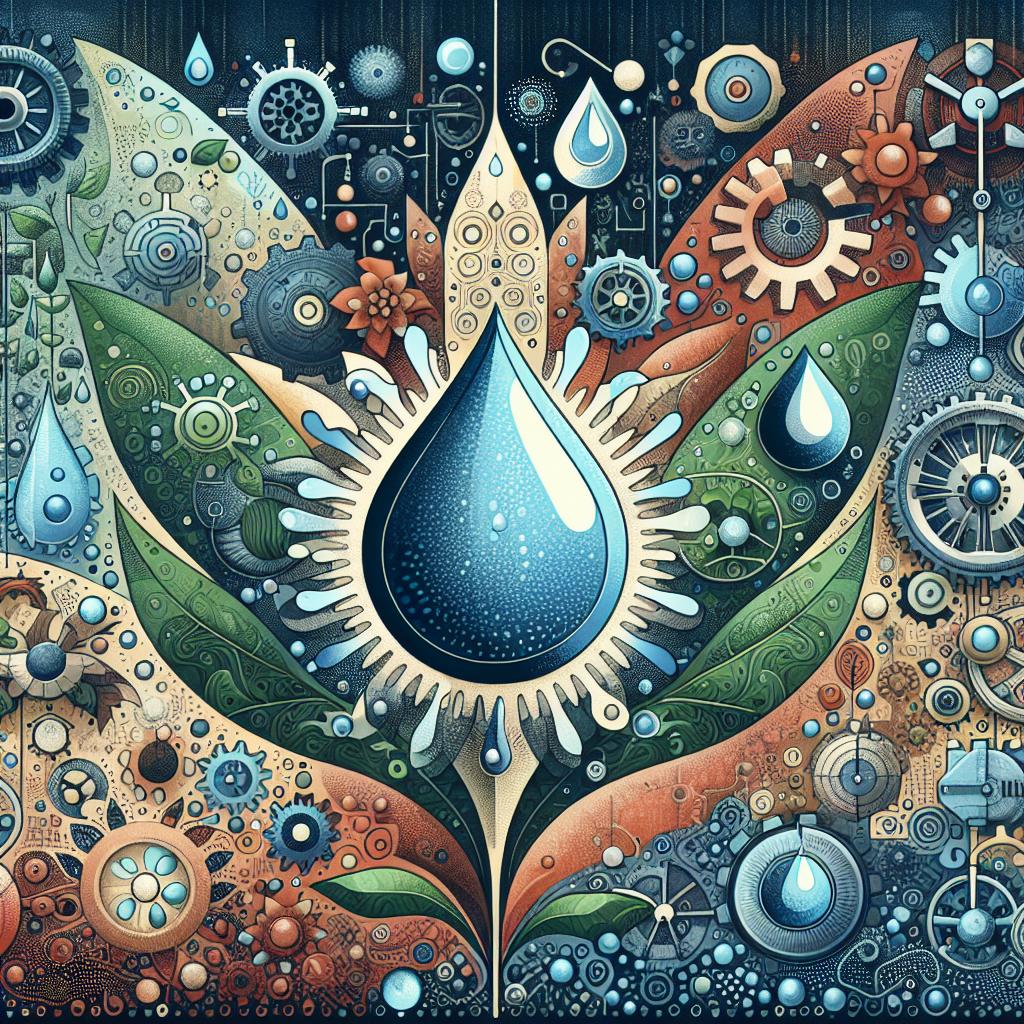This post may contain affiliate links which means I may receive a commission for purchases made through links. Learn more on my Private Policy page.
Introduction:
Imagine standing in the midst of a lush, green field, the luminous sun gleaming down on vibrant rows of crops, each leaf glistening with the promise of a bountiful harvest. But beneath this idyllic surface, an intricate dance takes place—a delicate balance between water, soil, and the thirsty roots eager to absorb the life-giving liquid. As a farmer or gardener,understanding how to calculate the water needs of your crops is like unlocking the secret to nurturing this beautiful ecosystem. whether you’re tending to a backyard vegetable garden or managing expansive farmland, knowing exactly when and how much water to provide is key to fostering healthy plants and maximizing yield. In this friendly guide, we’ll walk you through the fundamentals of irrigation, helping you navigate the waters of crop care with confidence and creativity. Let’s dive in and discover how to keep your crops flourishing, one drop at a time!
Understanding Your Crop’s Water Requirements
To effectively manage irrigation, it’s crucial to understand the specific water needs of your crops. Water requirements depend on various factors including crop type, growth stage, and local climate conditions. Generally, crops need more water during thier peak growth periods. To get an accurate estimate, consider conducting a soil moisture test to determine the water-holding capacity of your soil. This allows you to adjust irrigation frequency and quantities to suit the plant’s requirements. Factors to consider include:
- Soil type: Sandy soils drain quickly while clay retains moisture.
- Weather impacts: Hot, dry conditions increase evapotranspiration rates.
- Crop variety: Diffrent crops have unique water needs.
once you have assessed these factors, you can use a simple formula to calculate the daily water requirement. One effective approach is to measure the plant’s evapotranspiration (ET) rate, which can be obtained through local weather station data. For your convenience, here’s a quick reference table to illustrate how to adjust irrigation based on crop growth stages:
| Growth Stage | Water Requirement (inches/week) |
|---|---|
| Seedling | 1-1.5 |
| Vegetative | 1.5-2 |
| flowering | 2-2.5 |
| Maturing | 2-3 |

Choosing the Right Irrigation Method for Optimal Efficiency
When selecting the optimal irrigation method for your crops, consider the specifics of your agricultural framework. Each method comes with its own advantages and limitations, making it essential to align your choice with both the type of crops you are growing and the climate conditions of your region.Some methods to explore include:
- Drip Irrigation: Ideal for reducing water wastage, this targeted method delivers water directly to the roots, promoting healthy growth.
- Sprinkler Systems: Versatile and efficient, they can cover large areas and adapt to various terrains, but may lead to evaporation loss.
- Surface Irrigation: Simple and cost-effective, this traditional method is best suited for flat landscapes, though it demands careful management to prevent runoff.
Additionally, weighing efficiency against cost and maintenance is crucial. It helps to gather data on your soil type, crop growth stages, and local weather patterns.This way, you can utilize a method that not only conserves water but also maximizes crop yield. Below is a brief comparison of common irrigation methods:
| Irrigation Method | Water Efficiency | Cost | Maintenance |
|---|---|---|---|
| Drip Irrigation | High | Moderate | Low |
| Sprinkler Systems | Moderate | Higher | Medium |
| Surface Irrigation | Low | Low | High |

Monitoring Soil Moisture: Your Crop’s best Friend
Understanding the moisture levels in your soil is essential for promoting healthy crop growth. one effective method to gauge soil moisture is through the use of a soil moisture sensor, which provides real-time data on the moisture content at various depths. This technology empowers farmers to make informed irrigation decisions, ensuring that crops receive just the right amount of water. By regularly monitoring soil moisture, you can also avoid over-irrigation, which can lead to nutrient leaching and an increase in pests and diseases. Here are some benefits of utilizing soil moisture monitoring:
- Optimal irrigation scheduling: Customize watering times based on current soil moisture levels.
- Water conservation: Reduce water wastage and lower your irrigation costs.
- Improved crop yield: Maintain consistent moisture levels to support plant health and growth.
To effectively assess the water needs of your crops, consider employing a simple calculation based on the moisture retention capacity of your soil and the specific needs of your crop type. A basic formula to calculate the irrigation requirement is:
| Factor | Calculation |
|---|---|
| Soil Moisture Holding Capacity (inches) | Crop Water Use (inches) – Current Soil Moisture (inches) |
| Irrigation Amount | Needed Soil Moisture Capacity + Crop Use |
By keeping these calculations in mind and consistently monitoring soil moisture levels, you’ll be able to fine-tune your irrigation practices, ensuring that your crops thrive while using water efficiently. Remember, a well-watered crop is a happy crop!

Adapting to Weather Changes: Tips for Smart Irrigation Management
Understanding the specific water needs of your crops not only helps in efficient irrigation management but also promotes healthier growth. Here are some essential factors to consider:
- Weather Patterns: Regularly monitor local weather forecasts to predict rainfall and adjust your irrigation schedules accordingly.
- Soil Type: different soil types have varying water retention capabilities; sandy soils drain quickly, while clay soils hold moisture longer.
- Crop Stage: Adjust your irrigation based on the growth stage of your crops—new seedlings typically require more water than established plants.
To calculate the ideal water needs for your crops, consider using the following table as a guide:
| Crop Type | Water Requirement (inches/week) | Optimal Irrigation Method |
|---|---|---|
| tomatoes | 1-2 | Drip irrigation |
| lettuce | 1-1.5 | Sprinkler irrigation |
| corn | 1.5-2.5 | Center pivot |
To conclude
As we wrap up our journey through the intricate world of calculating water needs for your crops, remember that tending to your plants is not just about quenching their thirst—it’s an art and a science. By understanding the factors that influence water consumption, you can become a more intuitive and effective steward of your garden or farm.
Picture yourself standing among vibrant rows of vegetables or lush fields of flowers, knowing that each drop of water you provide is precisely what your crops need to flourish. With the techniques and tips we’ve explored, you’re now equipped to make informed decisions about irrigation that will lead to bountiful harvests and healthy plants.
So, as you step into your next watering session, take a moment to appreciate the dance of nature that you’re a part of. With a little patience and attention to detail, you can cultivate not just crops but a thriving ecosystem. Embrace the cycle of growth,and remember: the heart of accomplished farming lies in the balance of nature and knowledge. Happy gardening! 🌱💧
This post may contain affiliate links which means I may receive a commission for purchases made through links. Learn more on my Private Policy page.

